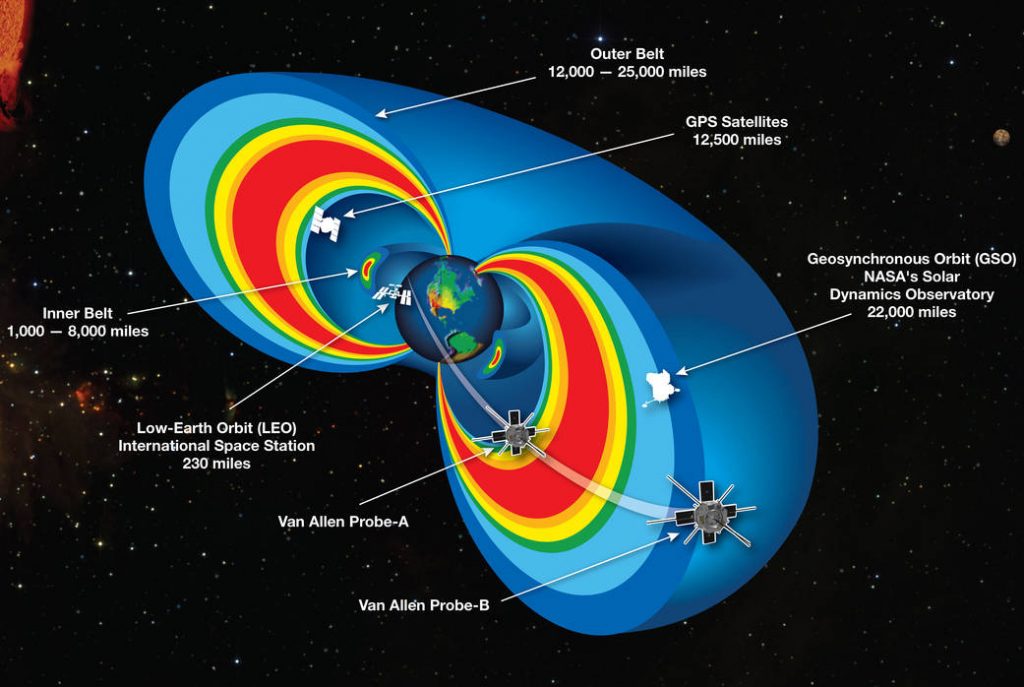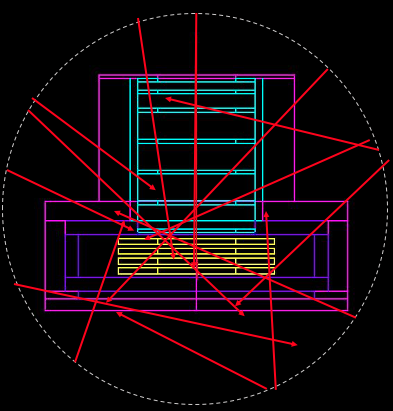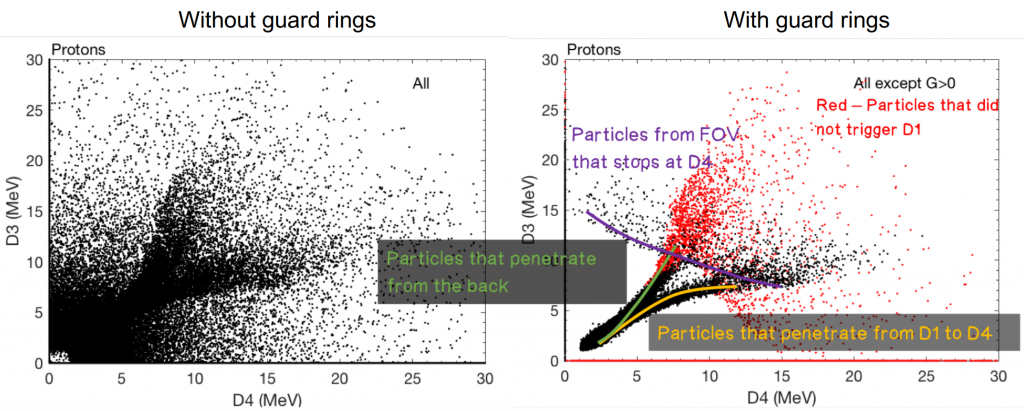Why Do We Care About the Radiation Belts?
Satellites in orbit are integral to everyday life on Earth. The position of these satellites in orbit makes them especially prone to radiation damages such as single-event upsets and latches that occur when high energy particles interact with the electronics inside of the satellite. Known for having highly energetic trapped particles drifting around the Earth, radiation belts pose an apparent threat to orbiting satellites as well as astronauts during extravehicular activity (EVA). Despite being the first scientific discovery of the space age, there are still many unsolved puzzles regarding radiation belt dynamics.
CIRBE's Mission
The science payload aboard CIRBE is a solid-state charged particle instrument, named Relativistic Electron Proton Telescope integrated little experiment – 2 (REPTile-2). REPTile-2 has the flight heritage from REPT onboard the Van Allen Probes and REPTile onboard the Colorado Student Space Weather Experiment (CSSWE). REPTile-2 inherits the instrument design from REPTile, which houses 4 solid state detectors, with each detector measuring a certain energy range, with the addition of guard rings on all four detectors. This change allows anticoincidence shielding and thus minimizes background contaminations. Higher energy particles coming from field of view can penetrate deeper into the detector. Outside of field of view, very energetic particles can pass through and lose most of their energy at the shielding of the detector, disguising the particle as a low energy particle. This illustrates the challenge of inferring the species and energies of charged particles, since only the energy deposited on the detectors is known.
What makes this instrument design unique is the use of anticoincidence techniques along with pulse-height analysis (PHA) that embodies a detailed understanding of the particles’ interactions with various materials. The height of an electrical pulse in the detector generally corresponds to the energy loss/deposit by the particle when traversing the detector. PHA, along with the use of guard rings as an anticoincidence technique, will be implemented within the REPTile-2 instrument to infer the incident energies based on the energy deposit on each detector. These two techniques enable REPTile-2 to measure 300 keV to 3 MeV electrons (and ~6-35 MeV protons) with fine energy resolutions and minimized background contamination.
GEANT-4 Simulations
The CIRBE team is using a program called GEANT-4 to simulate how particles interact with the REPTile-2 instrument. To do this, all particles are considered in the simulation, including those outside of the field of view of the detectors. The figure to the right shows the particles that GEANT-4 simulates. While some particles fall directly within the field of view of the detectors, many particles come from all sides, causing noise in the measurements. In GEANT-4, the CIRBE science team can simulate response functions and look at noise in the detector versus the actual particles we want to measure. It is important to note that GEANT-4 is just a simulation. In order to validate the results from these simulations, the results will be combined with radiation testing on actual detectors using a Strontium source.
What Sets CIRBE Apart?
The following figures highlight the uniqueness of the REPTile-2 instrument and the improvements since the CSSWE mission. The first image shows the number of energy channels each instrument can measure. It is clear that the measurement resolution on REPTile-2 is far greater than that of REPTile. The original REPTile instrument was only capable of detecting 3 distinct energy channels, whereas REPTile 2 can distinguish 50 distinct channels.

The next image shows how adding guard rings to the REPTile-2 instrument allows the CIRBE team to distinguish, and get rid of, side-penetrating particles that come from outside the field of view of the instrument. The figure on the left shows results of energy deposits on detectors 3 and 4 when no guard rings are present. When guard rings are added, much of the noise is reduced and we can further infer where the incident protons come from, as labeled in the figure.



